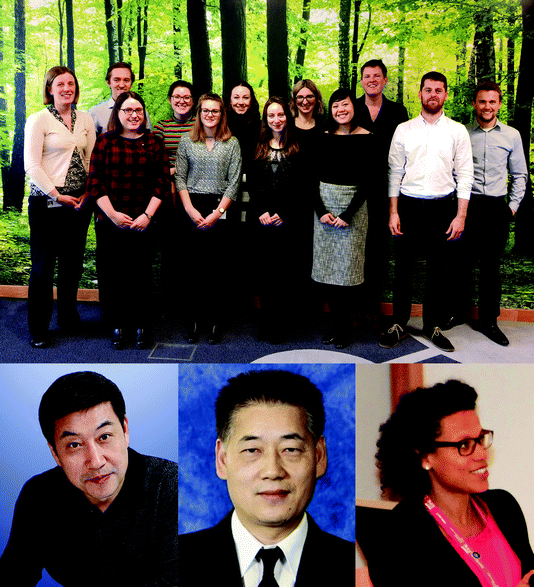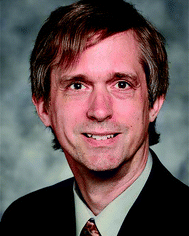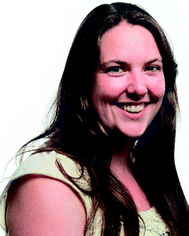20th volume of Green Chemistry
Philip
Jessop
a and
Anna
Simpson
b
aDepartment of Chemistry, Queen's University, 90 Bader Lane, Kingston, ON, Canada K7L 3N6
bRoyal Society of Chemistry, Thomas Graham House, Science Park, Cambridge CB4 0WF, UK. E-mail: green-rsc@rsc.org
Beginning with reflection, let's look back at how we've changed. Back in 1999, the first year of the journal, we published a total of 57 scientific articles over 6 issues. In 2017, we've published more than 10 times as many articles over 24 issues; you can see the most read articles of 2017 in Table 1. With an Impact Factor at a high of 9.125, the journal is delighted with consistently increasing submissions, demonstrating the growth of this important field. To handle this happy situation, we divide the submissions between the Cambridge office and three Associate Editors: Buxing Han, CJ Li, and Alessandra Quadrelli (Fig. 1). The hard work of the Associate Editors and the Cambridge staff, on behalf of the journal, is greatly appreciated. However, our greatest thanks also go to the thousands of referees who have evaluated manuscripts for us in 2017 and to the thousands of authors who have submitted their work to the journal. Without all of you, this journal could not serve the community.
 | ||
| Fig. 1 The Green Chemistry editorial staff, including the Associate Editors Buxing Han, CJ Li, and Alessandra Quadrelli. | ||
| DOI | Title | Authors | Pages |
|---|---|---|---|
| c6gc02328b | Transaminase biocatalysis: optimization and application | Fei Guo and Per Berglund | 333–360 |
| c6gc02157c | The E factor 25 years on: the rise of green chemistry and sustainability | Roger A. Sheldon | 18–43 |
| c6gc01937d | A review of thermochemical conversion of microalgal biomass for biofuels: chemistry and processes | Gopalakrishnan Kumar, Sutha Shobana, Wei-Hsin Chen, Quang-Vu Bach, Sang-Hyoun Kim, A. E. Atabani and Jo-Shu Chang | 44–67 |
| c6gc02526a | An optimised synthesis of high performance radiation-grafted anion-exchange membranes | Lianqin Wang, Emanuele Magliocca, Emma L. Cunningham, William E. Mustain, Simon D. Poynton, Ricardo Escudero-Cid, Mohamed M. Nasef, Julia Ponce-González, Rachida Bance-Souahli, Robert C. T. Slade, Daniel K. Whelligan and John R. Varcoe | 831–843 |
| c7gc01078h | Metal–organic frameworks meet scalable and sustainable synthesis | Patrick A. Julien, Cristina Mottillo and Tomislav Friščić | 2729–2747 |
| c6gc02825j | Phosphorus containing materials for photocatalytic hydrogen evolution | Zhuofeng Hu, Zhurui Shen and Jimmy C. Yu | 588–613 |
| c6gc02856j | Metal-free photocatalysts for various applications in energy conversion and environmental purification | Chunmei Li, You Xu, Wenguang Tu, Gang Chen and Rong Xu | 882–899 |
| c6gc03206k | Manufacture and application of lignin-based carbon fibers (LCFs) and lignin-based carbon nanofibers (LCNFs) | Wei Fang, Sheng Yang, Xi-Luan Wang, Tong-Qi Yuan and Run-Cang Sun | 1794–1827 |
| c7gc00398f | Syngas production from electrochemical reduction of CO2: current status and prospective implementation | Simelys Hernández, M. Amin Farkhondehfal, Francesc Sastre, Michiel Makkee, Guido Saracco and Nunzio Russo | 2326–2346 |
| c6gc02386j | Electrochemical synthesis of ammonia directly from N2 and water over iron-based catalysts supported on activated carbon | Baochen Cui, Jianhua Zhang, Shuzhi Liu, Xianjun Liu, Wei Xiang, Longfei Liu, Hongyu Xin, Matthew J. Lefler and Stuart Licht | 298–304 |
Looking forward, what do we hope to see in the coming year? The focus of our wish list is, as always, to serve the community better and enable progress towards a greener future. How can we do that? We're preparing a special issue to highlight the needs for greener chemistry in various areas or industrial sectors. Also, we can serve the community by helping authors and referees understand what we're looking for in manuscripts.
So what are we looking for? Every paper must have each of the following two characteristics:
• Quality is always paramount. Authors, referees, and editors must ensure that all scientific aspects of papers are of the highest quality, not just the green chemistry. For example, if the manuscript describes the synthesis of new organic compounds, then the evidence of purity and correct identification must be as rigorous as if the paper were being submitted to a high quality journal of organic chemistry. The same consideration applies to aspects related to physical, inorganic, or analytical chemistry, life cycle analysis, engineering, and other major aspects of the manuscript. Authors are encouraged to talk with or collaborate with experts in other fields if that would help to ensure that every aspect of their manuscript meets the expectations of related fields.
• Green chemistry. We sometimes receive scientifically excellent manuscripts that don't mention the advance that is made in green chemistry. It's not necessary for the words “green chemistry” to appear in the paper, but the improvement should be explicitly stated. If a new technology is being described, then what is the old technology that it would replace? How would the new technology improve upon the old technology in terms of environmental impact? Please don't assume that it's sufficient to mention a something like water as a solvent or biomass as a feedstock, without a clear and specific comparison to the incumbent technology. Without this background information, it's difficult for referees and editors to determine whether an advance in green chemistry has been made.
If every manuscript shared these features, then we could accept many more papers!
We also hope to widen the scope of papers that we publish. Green chemistry is relevant to many areas of human activities, but some of those areas receive more coverage in our journal than others. In particular, topics related to larger-scale activities and greater environmental impacts (mining, cement, fertilizers, pesticides, paints, natural gas) were each mentioned in the abstracts of 6 or fewer articles in 2015–2017. In contrast, topics related to small-scale activities and smaller environmental impacts (nanoparticles, ionic liquids) were each mentioned in the abstracts of more than 100 articles. We therefore particularly encourage the submission of articles in the larger-scale and emerging fields of chemistry.
As we celebrate the start of the new year, let us all renew our commitment to helping the environment by discovering, testing, writing, refereeing, editing, and publishing the best green chemistry in 2018.
Best Wishes for the New Year.
Philip Jessop and Anna Simpson
| This journal is © The Royal Society of Chemistry 2018 |


